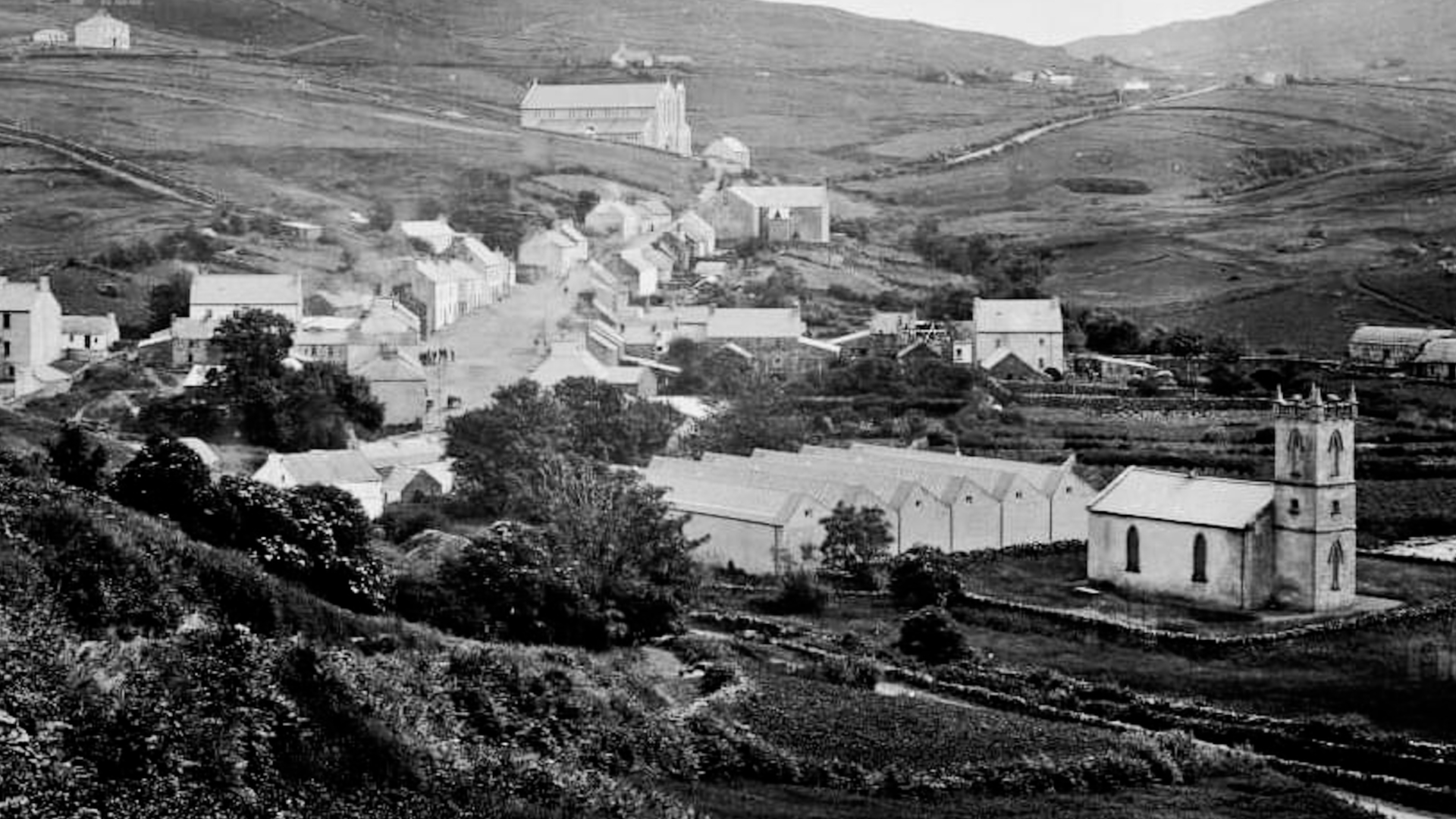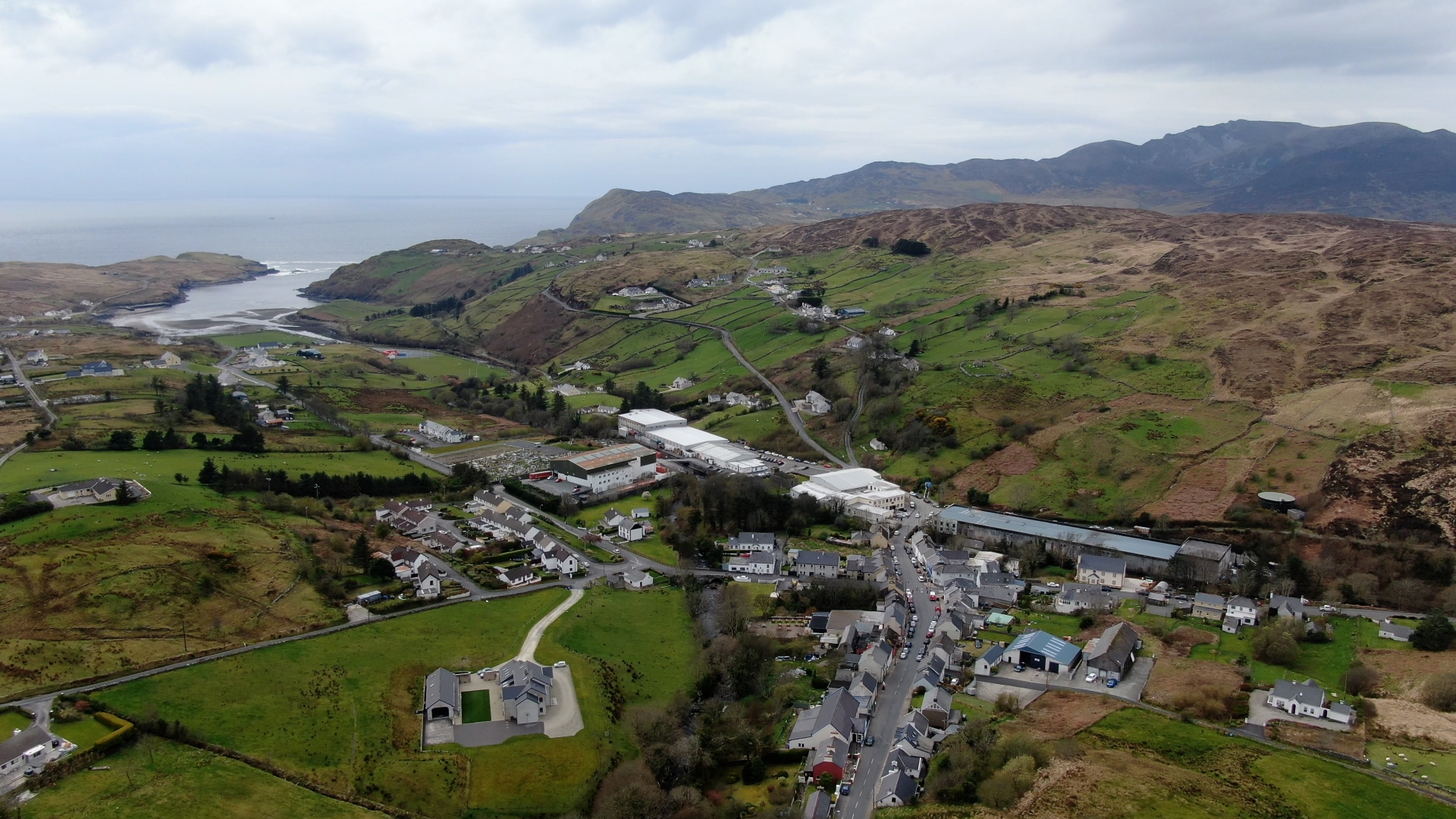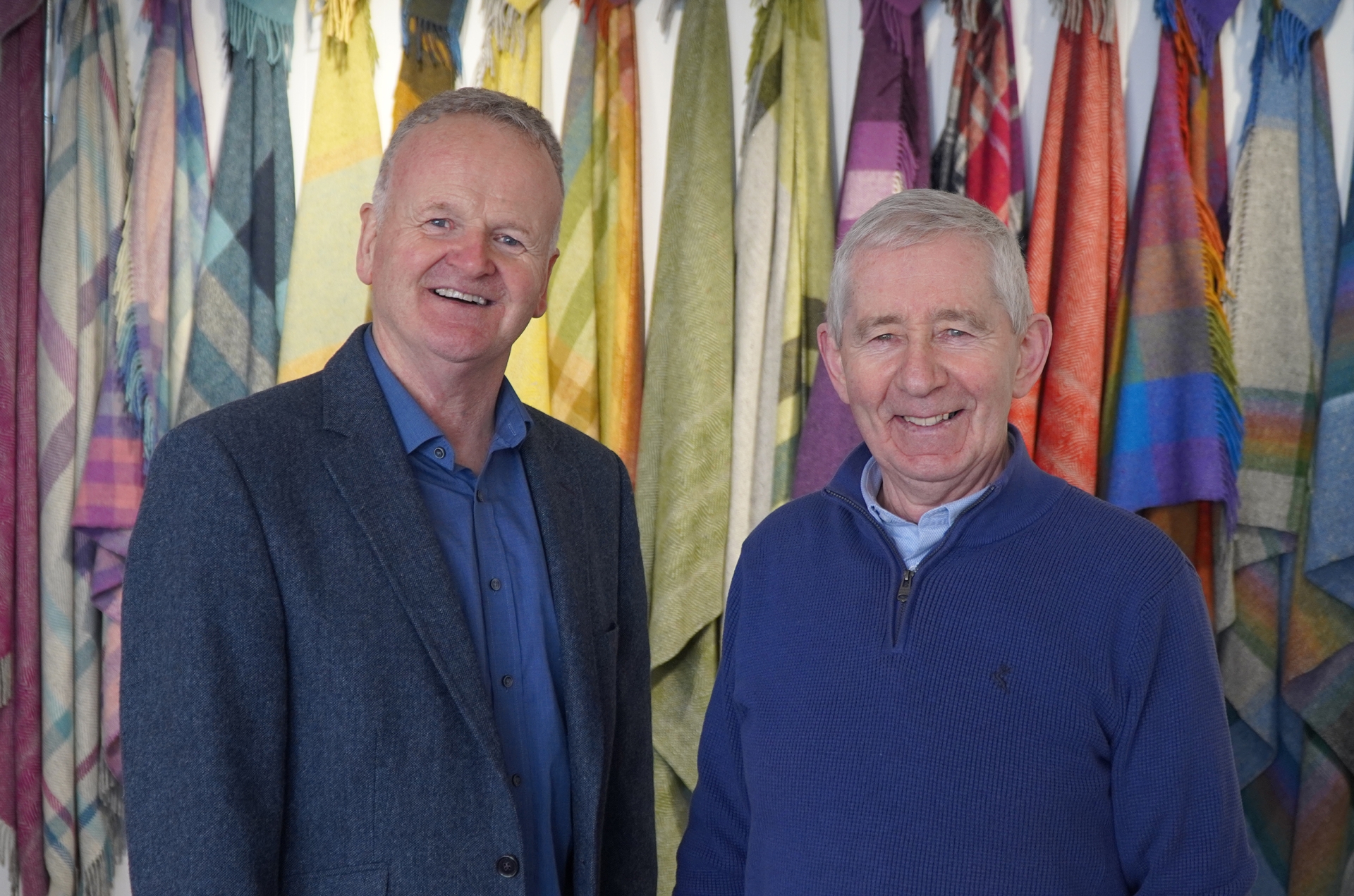Do you know how the textile industry came to be such a major part of the fabric in south-west Donegal?
On Thursday, March 7 an open invitation is extended to everyone for a special night which is being organised as a part of Donegal’s Local Enterprise Week.
Organised by the Local Enterprise Office, Údarás na Gaeltachta in conjunction with Áislann Chill Charthaigh, will host a talk about the history and the development of the textile industry in the south-west Gaeltacht over the last 120 years.
The event will celebrate the textile industry in Cill Charthaigh (Kilcar) and surrounding areas of Killybegs, Glencolmcille and Ardara and how it has evolved into a vibrant textile industry which provides employment for over 250 people in the South-west Donegal Gaeltacht.

Also on the night - a short film will be premiered. The film interviews local people that work or worked in textiles - outlining the story of spinning and tweed in the area. The film has been produced by Údarás na Gaeltachta and Áislann Chill Charthaigh and will be premiered in Áislann Chill Charthaigh at this special night, Thursday, March 7 at 7 p.m. and all are welcome.
“Donegal is the heartland of tweed and wool. It has been made in the homes of our people for generations. The colours and patterns of our tweeds and wool are at harmony with our landscape, reflecting sky, land and sea. It is an authentic part of who we are in Donegal, it is one of those colourful strands like fiddle playing, Irish Summer Colleges, fishing, traditional crafts, our coastal islands and much more that are associated with this county,” says Donnchadh Ó Baoill, Údarás na Gaeltachta.
The art of weaving was practised in Ireland as far back as 1600 BC. A fragment of cloth dated to 700 BC, and found in a bog in Armoy, Co Antrim in 1904, is held at the National Museum of Ireland. The cloth was described as a ‘broken twill weave’, indicating that herringbone weave was known as far back as the Late Bronze age.
The tweed Industry in the county owes its origins more to the late 1800s and early 1900s. And essentially, it evolved from two business models, one being private enterprises that saw an opportunity to add to their business - such as Magee 1866, Donegal Town, with their drapery business and expanded their business to include tweed from 1860s onwards. McNutt’s, Na Dúnaibh, who were involved in the grocery business first and also James Molloy at Muirlinn, Ard an Rátha who also developed their tweed business in the early 1900s.
The other business model which operated in Cill Charthaigh was more co-operative like community based with the help of benevolent charities much like the evolution of Harris Tweed in Scotland. There was government or state intervention and many of the businesses in Cill Charthaigh evolved from such a model such as Snáth Dhún na nGall/Donegal Yarns.

The revival and development of local industries which included tweed, knitting and embroidery evolved in the late 1800s. In time, the manufacture of tweed would become associated with the Ard an Rátha and Cill Charthaigh area, knitting with Glenties and Na Rossa and Gaoth Dobhair and embroidery in the Mountcharles-Ballintra area. These industries, at their height, are thought to have employed up to 8,000 women.
The emergence of Cill Charthaigh as a vibrant textile hub will be discussed on the night and will include the influence of Alexander Morton & Co, head of one of biggest and most successful textile companies in Scotland, who opened the first textile factory in Cill Charthaigh in 1904. Also discussed will be the influence of the Congested Districts Board, Micheal Óg Mac Pháidín, Gaeltarra Éireann and Údarás na Gaeltachta on the development of the textile sector.
The focus of tweed production shifting to Cill Charthaigh will be examined and the employment of over 250 people in the textile industry, between spinning, knitting and tweed production in South west Donegal will be discussed.
“This is the story of continuity, a story of resilience in the industry that at times was almost defiant; the retention of a wide range of skills and the constant regeneration of the industry in the southwest Gaeltacht is unique for a small rural area. Údarás na Gaeltachta are proud to have played a part in this story,” says Ó Baoill.
The main driving force locally behind the project to record the history of the industry is Maurice Hegarty, who also has a deep personal story to tell.
“Over the years I was thinking that there was no substantial history done on the subject. I remember Micheal O Domhnaill, big Michael as we called him, did something on the history of textiles. But generally there was nothing of much substance done and I felt that the history of textiles went back hundreds of years in this part of the county, particularly as a cottage industry.
“There was knitting, crocheting, sprigging and weaving,” said Hegarty, who felt that if the history was not recorded now, it could be lost for eternity.
“In the late 1800s, early 1900s, a man from Ayrshire in Scotland came to the area and toured around. The Congested District Boards of the time saw the necessity to have something local to alleviate poverty. They contacted a man, by the name of Alexander Morton.

“He travelled through Killybegs, into Cill Charthaigh, through to Ard an Rátha, Croithlí and Anagaire. He decided on the location in Killybegs because they had a railway line and a port that it would be an ideal place to set up a carpet factory.”
That was the starting point of the industry, which then spread countywide. “There was such a demand on his carpets that he saw it necessary to build three additional, small factories, one in Cill Charthaigh, one in Anagaire and one in Croithlí. The one in Croithlí eventually turned into the doll factory, hence the renowned Crolly Dolls, and is now a distillery. The Anagaire one is now derelict.
“The one in Cill Charthaigh was used for spinning and dyeing to service the Killybegs factory. Initially the three small factories were to service the Killybegs factory but Cill Charthaigh was the only one with a dyeing plant.
“The downturn came after the war and the three small factories were closed, but the Killybegs one kept going. So we had an empty factory in Cill Charthaigh for a number of years.
“Then we were lucky enough that we had a politician from the parish and a native Gaelic speaker, Micheál Óg Mac Pháidín, and the parish priest of the time, Fr James O’Donnell, who were the driving force to set up a spinning factory in Cill Charthaigh. That was set up in the late 1920s to early 1930s.”
Maurice Hegarty joined Gaeltarra Éireann as an employee on Tuesday, 19th March 1963, close on 61 years ago. He worked in the factory for 30 years and then was self-employed but remained attached to the industry throughout his working life.
“I thought about the people of my age who spent years working in the industry, and if this history is not written down now, it will be lost forever.”
There was so much history, even in his own family. “My father was a weaver. He wove at home first and that was very similar to a lot of homes where people had an outhouse for the loom. Then he went to Scotland where he also wove before returning home to work in the factory in the early 1950s.

Donnchadh O Baoill and Maurice Hegarty
“My mother was also a knitter all her life and of the seven children they had, six of us, at one time or another, went into the spinning or weaving factory.”
Maurice Hegarty set about researching the story, but he knew that he would need help and that came from a number of sources.
“As a board member of Áislann Chill Chartha, I was in a position now and again to bump into Donnchadh Ó Baoill from Údarás na Gaeltachta. I ran the idea past him a time or two, or three or maybe four. In fact, I might have pestered him, because I knew I wouldn’t be able to do this on my own.
“Eventually he said you might have something there. We talked about it last summer and decided that it was a project that we could take on,” said Hegarty.
Initially it was decided to record the history on camera and Maurice Hegarty said they were blessed to have someone right on their doorstep who could do this work to a very professional standard.
“We are so lucky. I think that we may not have done it at all or have real difficulty had we not got what you could call a resident cameraman in Declan ‘Dal’ Gallagher.
“Last August we did our first interviews. I gathered knowledge from many people so we selected 10 people for interview and not one of them refused. We wanted to encompass the full area so we interviewed two people from Ard an Rátha, two people from Glenn Cholm Cille and the rest from Cill Charthaigh.
“I think we had something like an hour and a half of interviews, so we had to edit it down to 20 minutes or so to make it interesting and to hold people’s attention.”
That edited film will be part of the special night on Thursday, March 7 in Áislann Chill Chartha. Then, hopefully by the end of the year or at the beginning of 2025, the full history of the textile industry in south-west Donegal will be contained in a special booklet.
No doubt some of the content for that booklet will be garnered at this special night on March 7.
Subscribe or register today to discover more from DonegalLive.ie
Buy the e-paper of the Donegal Democrat, Donegal People's Press, Donegal Post and Inish Times here for instant access to Donegal's premier news titles.
Keep up with the latest news from Donegal with our daily newsletter featuring the most important stories of the day delivered to your inbox every evening at 5pm.